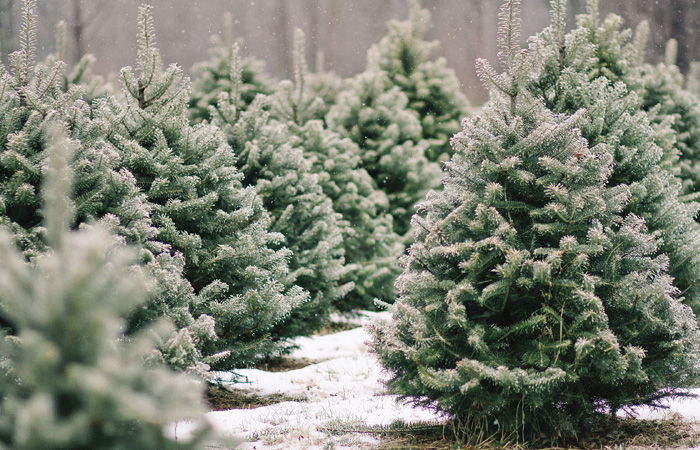Congratulations, avid golfers! We have officially made it to September and the worst of the summer heat is behind us. This year has certainly provided us with some unpredictable weather extremes. Now I know we are all looking forward to some amazing golf course conditions this fall. I also know the last thing you want to think about is turf/lawn weeds, but if you don’t want to stand in a sea of chickweed, henbit and Poa annua next spring, now is the time for action. Remember those weather extremes that we just talked about? Well, they make it even more important that your weed-control products are well-timed and accurately applied.
All that said, the question I am getting the most as I travel from club to club these days is when should I apply pre-emergent herbicide to control winter weeds? For all you loyal readers, this will be a review of some things with a September spin, along with a few tips and tricks. Let’s look at some of the basics for controlling weeds in your turf.
First Things First
It is important to know what type of turf grass you have in your lawn before you start developing any weed-control program. You may remember this from our February articles over the years, but it bears repeating. The most common turf grass types in North Texas include Bermuda grass, zoysia grass, Saint Augustine, centipede grass and fescue, to name a few. Each type of grass has different light, soil and fertility requirements, as well as growth and environmental factors, so knowing that you have picked the best-suited grass for your lawn’s environment is important. Healthy turf is the first step in controlling invasive weeds, as the base turf can suppress many weeds before they can establish themselves in the sward (turf stand).
Assuming that you have the right grass in place, we will move on to defining what a weed is and how to control weeds (focusing on winter or cool season weeds) that will eventually challenge your desire for a beautiful lawn. The main takeaway here is that a healthy lawn is weed-resistant but not weed-proof.

What is a Weed?
What exactly is a weed anyway? For our purposes today we will define a weed as a plant growing where it is not wanted and in competition with desired/cultivated plants. So, essentially, any plant that is growing where it is not wanted is a weed. Bermuda grass growing in a Saint Augustine lawn, for instance, is considered a weed.
In terms of lawn or turf weeds, they come in two basic groups: winter or cool season weeds (henbit, chickweed and Poa annua (annual bluegrass or common meadow grass to our friends from the UK), and summer or warm season weeds (goose grass, crab grass and nutsedge). Weeds begin to germinate at different times of year. The cool season weeds germinate generally in early September through November, and the warm season grasses from mid-February through May.
There are also two basic approaches to weed control: physical and chemical. Physical weed control is simple; you literally remove the weed physically. This is often impractical, depending on the number and establishment of the weed population, but it does the job if you have the desire and the time. Chemical weed control is achieved through the use of herbicides (an agent, usually chemical, used to kill plants). Herbicides also come in two primary groups: pre-emergent and post-emergent herbicides. Pre-emergent herbicides are applied BEFORE the weed plant germinates, killing the plant just after seed germination before a root can establish in the soil. Post-emergent herbicide is applied to existing weeds and often requires direct contact to be effective. There are a few pre-emergent herbicides that have some post-emergent characteristics, but by in large you will make the choice of herbicide based on the time germination of the weed. Post-emergent herbicides can also be selective (kill certain plants but will not harm others) and non-selective (will kill or damage most plants that contact the product).
Timing is Everything!
It is critical that a pre-emergent herbicide be applied properly and at the right time of year to be truly effective. So now is the time to apply pre-emergent to control winter or cool season weeds, starting in late August through September. We will not go into all the factors that affect weed seed germination (weather is certainly a factor), just know that pre-emergent herbicides are effective if they are applied before the weed seed germinates. In fact, pre-emergent herbicides prevent the germination of weed seeds by inhibiting a key enzyme and should be applied spring and fall to provide year-round weed protection. It is important that the herbicide makes good soil contact to be effective, so watering in the product is essential.
Since it’s September and we are focusing on winter or cool season weeds, it’s important to know that the king of the cool season weeds is Poa annua. Poa, as it is known in the business, is a prolific seeder and highly competitive weed that often develops resistance to herbicides, so changing the active ingredient of the herbicide from time to time is a good strategy. If you let Poa grab a foothold, it will soon take over your lawn, increasing its numbers each year. A single Poa plant can produce 100 seeds in eight weeks. So, learn what it looks like (ID Weeds is a great phone app) and plan accordingly. Remember to try to have your pre-emergent down before September 20th, and sooner is better than later. Most homeowners will likely choose a granular pre-emergent, but others prefer sprayable formulations. These can be purchased from your local nursery or garden center. But remember to follow the label recommendations on any pesticide, including all safety instructions such as required PPE (Personal Protection Equipment) that must be worn during applications, such as chemical-resistant gloves, eye protection, long sleeves, long pants, etc. Below are some proven weed-control options.
Prodiamine (Barricade equivalent) is the longest-lasting and most economical, due to low application rates.
Isoxaben (Gallery equivalent) prevents a very large list of broadleaf weeds.
Dithiopyr (Dimension equivalent) versatile product that, at higher rates, has some post-emergent activity.
Once you have purchased your product, simply follow the instructions on the product label that is attached to the bag/container. If you have questions or want the latest tips on turf grass in Texas, the Texas A & M Agrilife Extension program can help either online or by phone.
To improve your results, you may consider making a spilt application of the herbicide. This involves making two applications at 50 percent of the recommended product rate. This allows one application early in the season and a second several weeks later to offer a larger window of control without over-applying the active ingredient of the herbicide. This strategy works well when weather extremes make choosing one application date seem unproductive (yes, I am making a split application on my home lawn this year).
If you are planning to make a granular pre-emergent herbicide application, here is a quick reminder of how to calibrate your rotary spreader. Note that if you intend to apply fertilizer and pre-emergent separately, apply the fertilizer first water in and wait several days before applying the pre-emergent as directed by the product label.

How to Calibrate a Rotary Spreader
Determine the amount of fertilizer/product needed for 100 sq. ft. For example, the fertilizer bag weighs 50 lbs. and covers 10,000 square feet per the label recommendation.
Place this amount in the spreader.
Mark off the area. For a rotary spreader, use a 10-foot-by-10=foot area (100 sq. ft.).
Apply using the suggested label setting to the test site.
Adjust the setting up or down based on the actual amount of fertilizer applied; if you covered the area completely with nothing left in the spreader, you are perfect! If you have product left in the hopper, increase the spreader setting. If you run out of product before the area is covered, then decrease the setting. Repeat this process until you find the correct setting. Take notes for future reference.
Complete the application for the rest of the lawn.
One Last Thing
Weed control is an ongoing process of controls and actions that strengthen the base turf grass and eliminate invasive plants. It is September, so if you see mature weeds in your lawn, they are summer weeds (see paragraph three) and will not be killed by a pre-emergent herbicide applied now. The colder temperatures will eventually burn this year’s holdover summer weeds back, but seed and other root parts will be ready to return next summer unless you take some action. Just remember that the fall (September) pre-emergent application prevents winter weeds, and a spring pre-emergent application prevents summer weeds (we cover summer weed control in the February issue). You may still need post-emergent applications to spot treat weed breakthrough, but at least two well-timed pre-emergent herbicide applications make a great foundation for year-round lawn weed control.
Remember there are no 100 percent effective weed-control products available, so using some physical removal and other strategies is required to be most effective. When it comes to weed control, an ounce of prevention is worth a pound of cure. Be diligent, and your perfect lawn will soon be a reality.